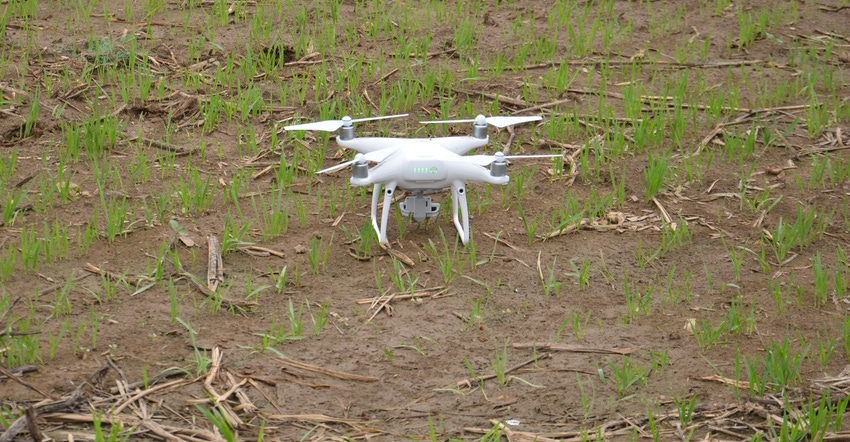
What can you learn flying a drone over a soybean field even days from harvest? Steve Gauck says it’s a long list. He’ll start with an obvious conclusion: Irrigation makes a huge difference on drought ground, even if you don’t need it until very late in the season.
“The line is very clear from the drone image a couple hundred feet up in the air,” says Gauck, regional agronomy manager for Beck’s, based near Greensburg, Ind. Beck’s sponsors Soybean Watch ’20.
Related: Moles, voles in minimum tillage present pesky challenge
“You can tell exactly where the water stopped as the center-pivot irrigation system moved across the far corner of the field,” Gauck says. “It’s not as obvious right at the far north edge of the field, and that might be worth checking out. Once you get a good overview of a field from the air, you can go back and investigate potential causes of what you see by ground-truthing.”
The other glaring difference in this photo (below) is that one variety was several days closer to harvest than the other. That’s true even though one is in the 3.5 maturity range, and the other is in the 3.7 range. Gauck is still investigating why the difference appears more dramatic than the difference in maturity group ratings might indicate.

SPOT THE IRRIGATION LINE: It’s easy to pick out the corner of this soybean field that didn’t receive irrigation. Most of it consists of loam over gravel at about 3 feet deep. Late August and September were unusually dry.

Irrigation story
The reason this farm is irrigated is because the back part of the field, the part including the dry corner, is primarily a loam soil underlain with sand and gravel at about 3 feet. Yet as weather patterns go in the area, this year was closer to a normal year than a dry year, the grower notes.
In fact, it was wet early, delaying planting until June 6. When a June dry spell set in, the grower took advantage of having irrigation to apply one round of water to help soybeans germinate and emerge. As a result, he achieved a better-than-adequate stand, Gauck says.
The irrigation rig didn’t move to irrigate beans again until mid- to late August. Gauck notes that if you irrigate soybeans too often or too early, especially in the vegetative growth phase, it may encourage them to produce rank growth, which can lead to late-season lodging and actually trim yield. In 2020, irrigation really wasn’t needed anyway, the grower notes, until rain became scarce in late August.
The field was irrigated three times in September, and the soil was still moist on Oct. 1, when Gauck visited and flew his drone, taking the picture illustrating the difference in color between irrigated areas and the nonirrigated land where water didn’t reach.
“Even in areas of the field without gravel underneath, there seemed to be minimal pod abortion near the top of plants,” Gauck notes. “Beans near the top of most plants in both varieties were filled with plump beans. It’s obvious areas of the field that aren’t as prone to drought were benefiting from late irrigation as well.”
About the Author(s)
You May Also Like




